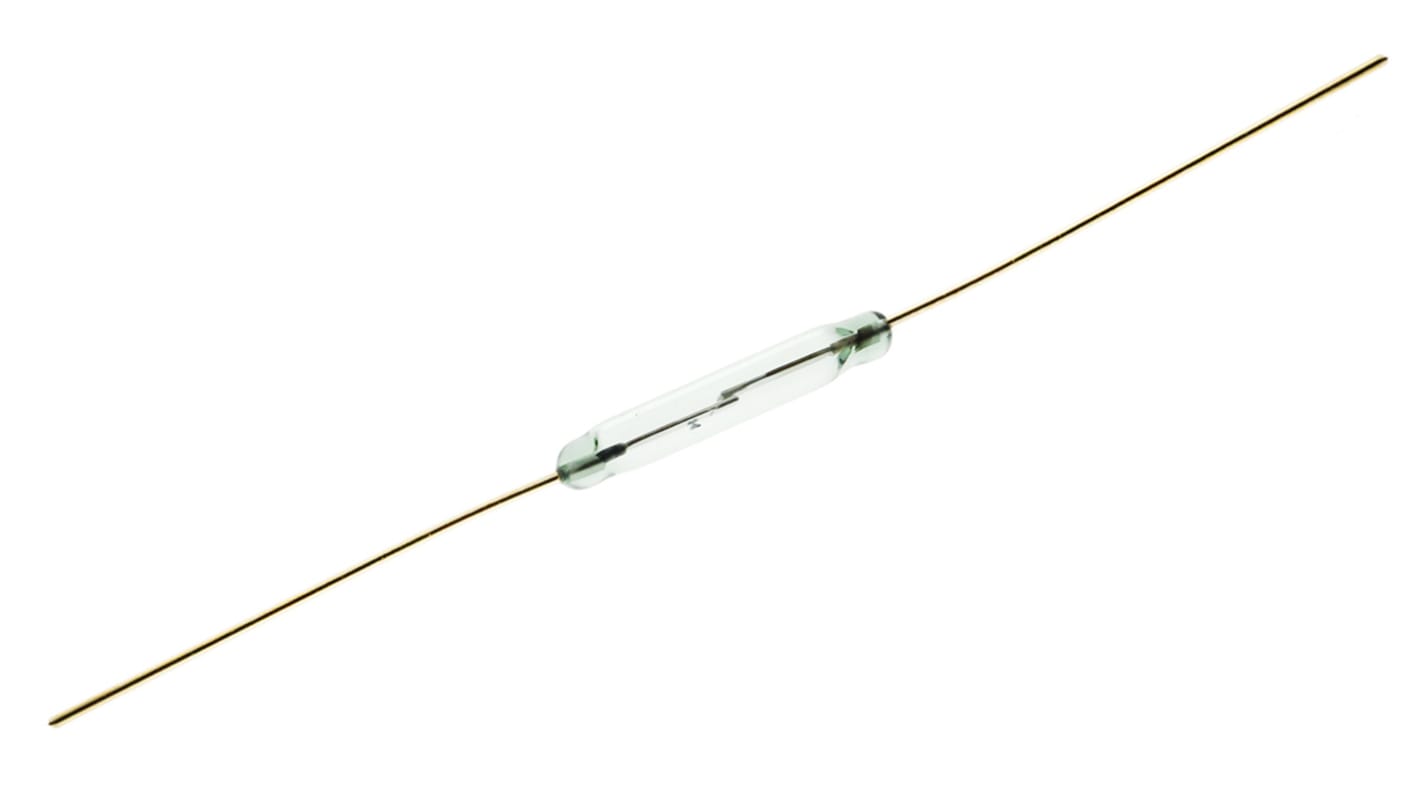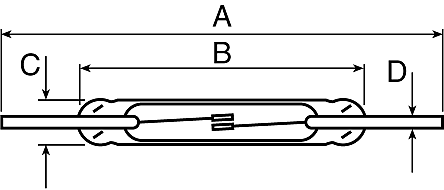Sensata Cynergy3 SPST Reed Switch, 500mA 150V ac/dc
- RS Stock No.:
- 229-3692
- Mfr. Part No.:
- TRA294G/20-30
- Brand:
- Sensata / Cynergy3

Bulk discount available
Subtotal (1 unit)*
£2.42
(exc. VAT)
£2.90
(inc. VAT)
FREE delivery for orders over £50.00
Limited stock
- 1,027 left, ready to ship from another location
Need more? Click ‘Check delivery dates’ to find extra stock and lead times.
Units | Per unit |
|---|---|
| 1 - 19 | £2.42 |
| 20 - 99 | £2.28 |
| 100 - 249 | £2.11 |
| 250 - 499 | £2.10 |
| 500 + | £1.99 |
*price indicative
- RS Stock No.:
- 229-3692
- Mfr. Part No.:
- TRA294G/20-30
- Brand:
- Sensata / Cynergy3
Specifications
Technical Reference
Legislation and Compliance
Product Details
Find similar products by selecting one or more attributes.
Select all | Attribute | Value |
|---|---|---|
| Brand | Sensata / Cynergy3 | |
| Contact Configuration | SPST | |
| Maximum Switching Current | 500mA | |
| Maximum Switching Power | 10W | |
| Maximum Switching Voltage | 150V ac/dc | |
| Contact Resistance | 150mΩ | |
| Contact Material | Rhodium | |
| Maximum Release Time | 0.05ms | |
| Operating Time Including Bounce | 2ms | |
| AT Value Range | 15 → 35AT | |
| Length | 55mm | |
| Select all | ||
|---|---|---|
Brand Sensata / Cynergy3 | ||
Contact Configuration SPST | ||
Maximum Switching Current 500mA | ||
Maximum Switching Power 10W | ||
Maximum Switching Voltage 150V ac/dc | ||
Contact Resistance 150mΩ | ||
Contact Material Rhodium | ||
Maximum Release Time 0.05ms | ||
Operating Time Including Bounce 2ms | ||
AT Value Range 15 → 35AT | ||
Length 55mm | ||
- COO (Country of Origin):
- CN

Sensata Cynergy3 Reed Switch, SPST Contact Configuration, 10VA Switching Power - TRA294G/20-30
Use this tiny but tough reed switch from Sensata Cynergy3 for high-speed switching applications. Thanks to an operating time of 2ms and a maximum release time of just 0.05ms, you can rest assured you'll get rapid-fire switching. Its wide operating temperature range of -40°C to +150°C means it will hold up when the heat is on. Reed switches like this one are commonly found in medical equipment, security screening systems or automotive applications such as door sensors.
Features & Benefits
• Switching voltage of 150V AC/DC for use in low-power systems
• Rhodium contact material offers low contact resistance and high conductivity for reliable switching
• Rhodium contact material offers low contact resistance and high conductivity for reliable switching
What are the dimensions of this product?
The reed switch has compact dimensions of 55 (L) x 2.3mm (D), as well as a wire diameter of 0.5mm. This makes it easy to install in tight spaces.
How does a reed switch work?
A reed switch is a type of electrical switch that's actuated by magnetism. The thin, flexible metal wires known as reeds are drawn together by magnetic forces, thereby closing the circuit.
Related links
- Sensata Cynergy3 SPST Reed Switch, 1A 230V ac/dc
- Sensata Cynergy3 SPST Reed Switch, 300mA 300V
- Sensata Cynergy3 SPST Reed Switch, 500mA 200V ac/dc
- Sensata Cynergy3 SPST Reed Switch, 100mA 24V ac/dc
- Sensata Cynergy3 SPST Reed Switch, 1.3A 250V ac/dc
- Sensata Cynergy3 SPST Reed Switch, 10mA 30V ac/dc
- Sensata Cynergy3 SP-CO Reed Switch, 250mA 175V ac/dc
- Sensata Cynergy3 PCB Mount Reed Relay SPST 1 A Max, 500Ω
